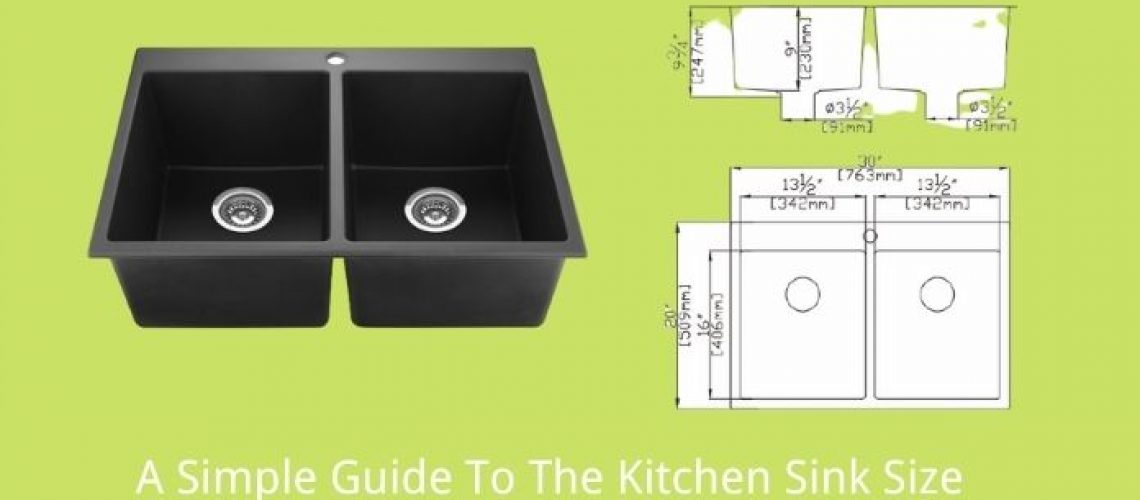As a business, your products must be diverse. The customers should have a wide variety of options to choose from when shopping from you.
One way to increase diversity is to include different sizes of kitchen sinks.
This article gives you an insight into how sinks are measured.
Let’s get right to it!
What Are The Dimensions Of A Kitchen Sink?
Overall Size
The overall size refers to the size of the entire sink. It is the dimensions of the sink from top to bottom. Take this picture as an example, the overall size is 23“ ×17-7/8″.
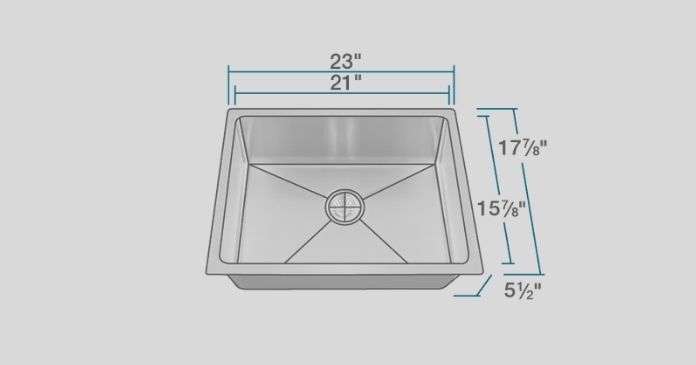
Bowl Size
This is the size of the bowl of the sink. The bowl is the small space which is used to wash dishes and vegetables. Its size is what determines how easily you’re going to use the sink. Take this picture as an example, the bowl size is 21“ ×15-7/8″.
The size of the bowl is an important aspect when offering sinks. You should offer a variety of bowl sizes, mainly because there are customers with different sized countertops and kitchens. They will prefer different sizes of the sink.
For example, if someone has a small countertop and only uses the sink to wash dishes, he will go for a smaller size.
Bowl Depth
This aspect of the sink is usually overlooked when you consider the size of the sink. However, this feature is essential. It will determine whether or not you can wash large pots and pans in your sink. The standard depth range for sink bowls is 8 to 15 inches. However, 15 inch deep sinks are rare.
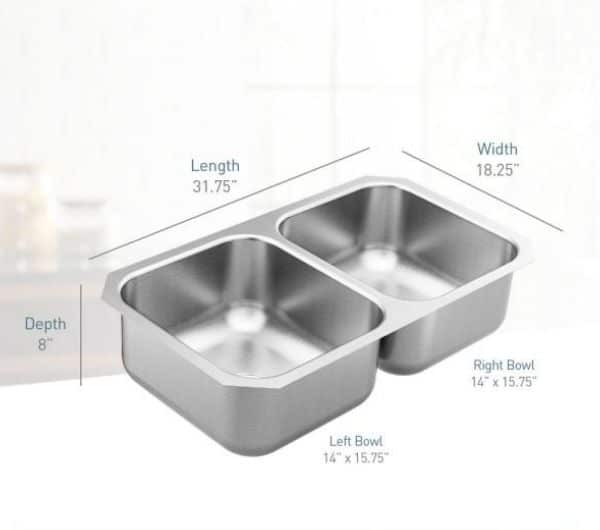
9-10 inches depth are more common in American families. Deeper sinks can hold much more dishes as compared to lower sinks. Deep sinks can also mask the amount of dirty dishes sitting inside the sink!
Drainer Hole Size
The drain usually has four holes which are equally spaced and are of equal length. These holes allow the water to flow down the sink and typically take the dirt with it.
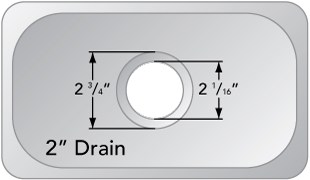
The average size of the drainer hole is 91 mm. However, different brands may have different sized drainer holes. This is because they have to match the basket strainers (the accessories).
Sink Radius
By sink radius, we mean the angle of the corners of the sink. Believe it or not, the radius of a sink can completely alter its look and functionality. Usually, sinks have a radius of 25 corners.
Zero Radius Sinks: There also exist another type of sinks which is known as zero radius sinks. These type of sinks have 0-degree corners and have different pros and cons as compared to a regular sink.
The sink radius is an essential distinction in a sink as it changes the shape of the sink entirely and will alter its feel.
Standard Kitchen Sink Sizes
The sink size also depends on the number of bowls that you’re using. If you’re using multiple bowls, obviously your sink is going to be bigger.
The standard size of your sink depends upon the number of bowls you’re using.
For single bowl stainless steel sinks, the standard size is 60 x 45 cm. The smaller size is 50 x 40 cm.
For a double bowl sink, the standard sizes are 88 x 48 cm. The most common size is 81 x 47 cm.
When it comes to a three bowl sink, the standard sizes are 97 x 48 cm. However, the most common size used is 103 x 50 cm.
Standard Sizes Of Special Sinks
Special sinks have different standard sizes because of the shape of the sink. Some of the special sinks are given below, and their available sizes are explained.
Bar Sinks
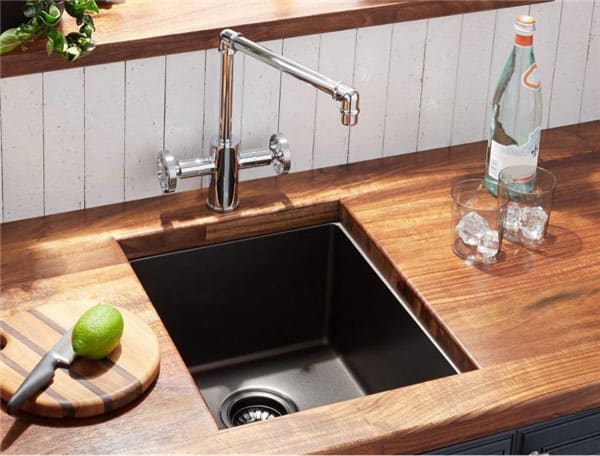
These are sinks of smaller sizes and are much more shallow than your average kitchen sink. The shapes that they come in are square and round. The main feature of this type of sink is that it is smaller.
It is usually made of copper or stainless steel.
Drainboard Sinks
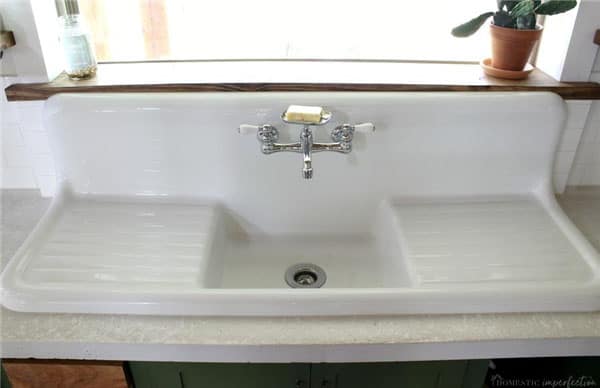
These types of sinks have an apron attached to them. Some sinks have the apron on one side while others have it on both sides.
Obviously, since the apron is a part of the sink, it will be larger than your average sink. This apron is angled down to provide the water with a path to the sink.
Integrated Sinks
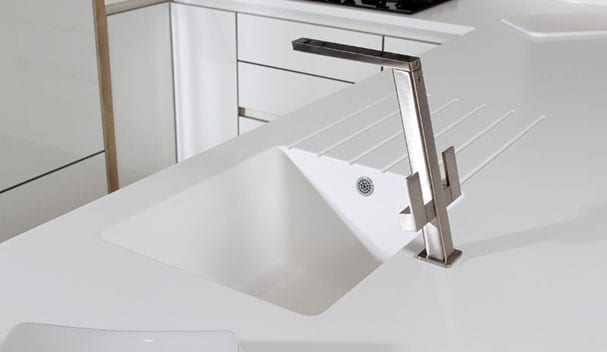
This is a sink and a countertop in one single piece. It is made of the same one material. This type of sink is larger than the average sink. This is because the size of the countertop is added to the size of the sink.
Size Also Depends On The Materials Used
The size of the different materials used is also different. This is because certain materials have a certain thickness. For example, ceramic is very thick and stainless steel is very thin.
Your material also adds some inches to the sink’s size.
Also, keep in mind that different countries and regions have different sink sizes. Some areas use inches for dimensions instead of centimetres, such as the USA.
FILL IN THIS FORM TO REQUEST A QUICK QUOTE FROM CHICA DRAGON
Conclusion
The size of the sink depends upon what the customer expects from the sink. Include a large variety in your portfolio to please more customers.
Good luck!









